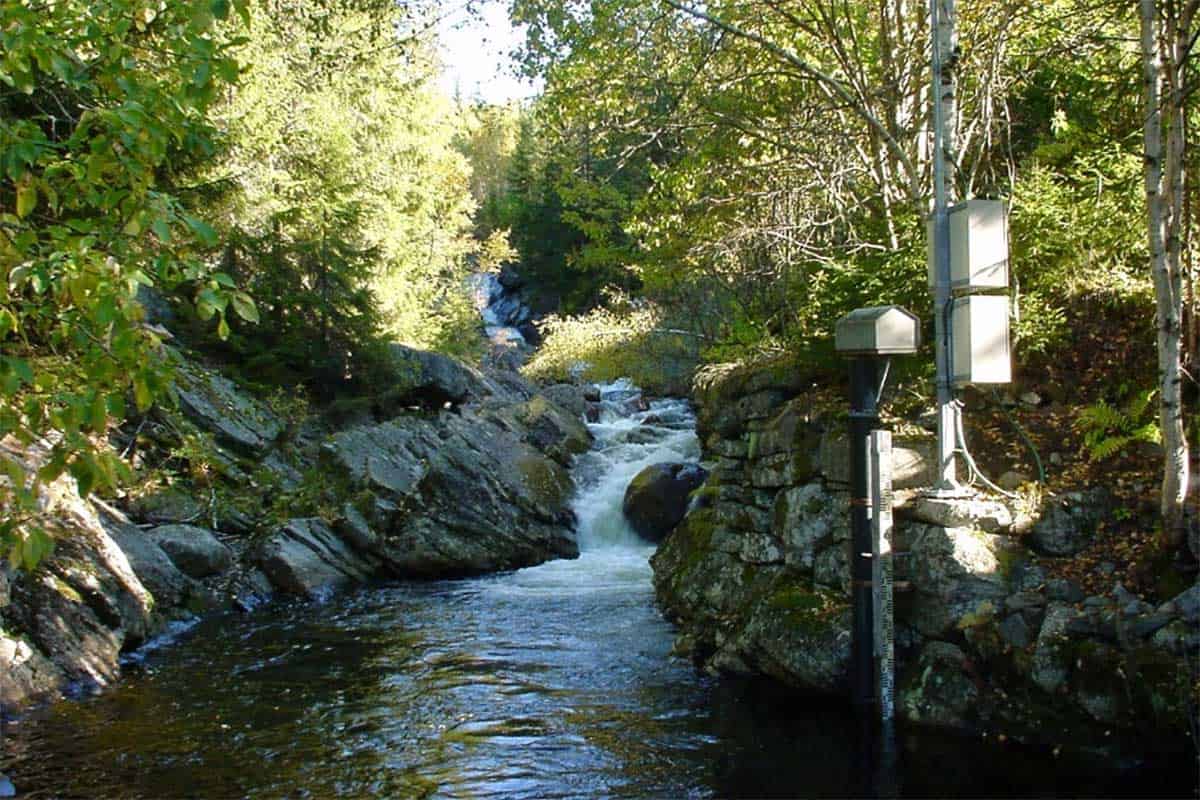Application
Scanmatic has in many years delivered hydrology stations to end users in Norway and abroad, including the Norwegian Water Resources and Energy Directorate and many power companies in Norway, included Statkraft. The station meets the relevant requirements from NVE and Statkraft.
The stations consist of a data acquisition unit (DAU) and one or several sensors. The solution is powered from mains supply or from a solar panel and it also includes a backup battery. Some basic stations are powered only from a lithium battery and the stations can run from battery for many years.
The stations communicate with a data acquisition system over different communication medias e.g. fiber, DSL, mobile network, radio and satellite.
Typical measurements for a hydrology station are:
- Water level in reservoir, river or ground water.
- Water temperature.
- Minimum water flow from dam required by imposed concessions.
- Minimum water flow in river required by imposed concessions.
- Water quality in reservoir, river or ground water.
- Head loss in trash rack at water inlet.
- Leakage in dam
Technology
In some cases, a display is added to the data acquisition unit to inform the public that the water flow is above the minimum level, imposed by the concession.
The sensor is installed in best possible way to prevent damaging the sensor in flooding or icing conditions. It is equipped with necessary overvoltage protection to prevent damage by thunderstorms.
The measuring range is defined by the application e.g. the measuring range will be from half a meter below lowest regulated water level to the dimensioned flooding value for measurement of water level in a reservoir.
Different type of sensor technology and measurement principles are used and some of them are shown below:
- Submersible pressure level sensor
- Bubbler level sensor
- Float operated encoder
- Ultrasonic level sensor
- Radar level sensor
- Staff level gauge
The submersible pressure level sensor is often used for measurement of water level in reservoir. It is installed in a place that is unaffected by head loss when the power plant is running. In some places long cables for the sensor is necessary, something that makes it vulnerable for overvoltage in thunderstorms. Icing conditions for the sensor should be prevented since icing can damage the sensor.
Scanmatic delivers bubbler measurement systems or a submersible fiber-based buoy as an alternative to the pressure level sensor. They are not affected by overvoltage in thunderstorm since no active components are placed in the reservoir for the bubbler system or the buoy is galvanic isolated with the help of the fiber.
Ultrasonic or radar-based level sensors are not in contact with water and will therefore not be affected by ice. The placement of the sensor is important since no physical object shall be within the sensor beam to create false echoes that disturbs the measurement. The measurement beam is usually around 12 °.
The float operated encoder is typically installed in an observation well, that is interconnected with the river or the reservoir through a narrow water communication pipe. The pipe attenuates the effect of waves on the measurements.
Several different sensor technologies are used for measurement of water flow or discharge as shown below:
- Manual measurement of water speed in several points of the cross section of the river. Water flow is calculated from these measurements in the DAU or the DAS.
- Propeller based current meter.
- Magnetic inductive current meter.
- Acoustic doppler current meter.
- Salt dilution solution.
- Automatic measurements are used where water flow will be recorded over time.
- Magnetic inductive.
- Ultrasonic transit-time.
- Ultrasonic doppler.
- Radar for measurement of surface speed.
- Water level over known profile e.g. V notch weir.
Water quality can be measured with a number of individual sensor or with a single multiparameter sensor. Relevant measurements in the energy sector can be:
- pH
- Total dissolved gas
- Dissolved oxygen
- Turbidity
- Conductivity
- Water temperature
